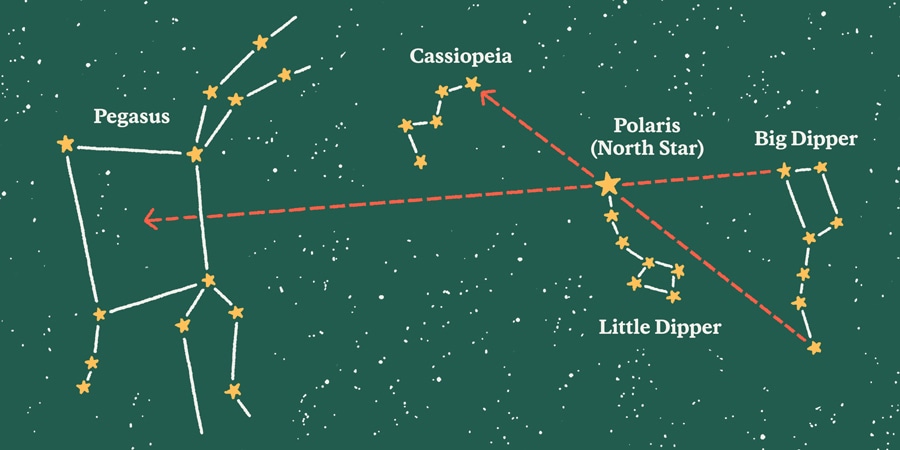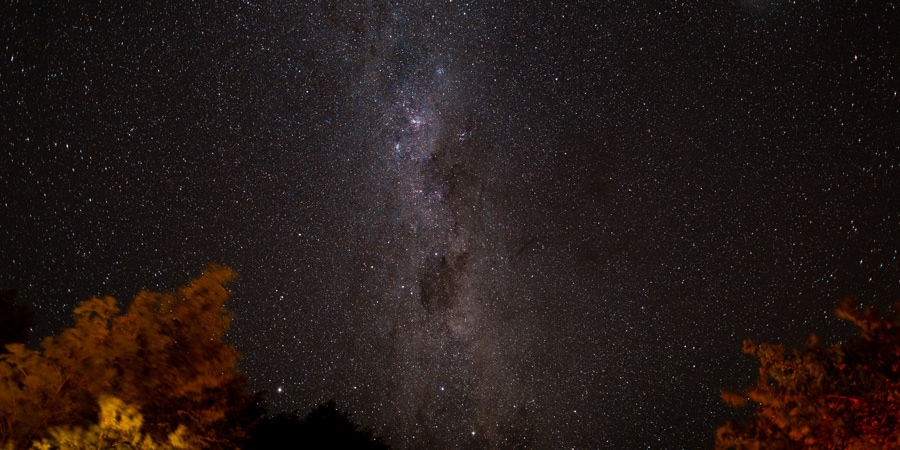The next time you're out at night, take a moment and look up at the sky. Stargazing is a great way to relax, get out of your own head and explore your place in nature and the universe. Finding new stars or tracing out constellations can add an element of fun when you're outside camping or backpacking. But it's also an activity you can do close to home.
Stargazing for Beginners

Start by Looking Up
The first step to stargazing is a simple one: look up. Whether you're on a camping trip, a nighttime hike or sitting in your backyard, take the time to gaze up at the sky. Notice the position of the sun or the moon or try to find the brightest stars or planets such as Venus, which is so bright it is occasionally visible in the daytime. You don't need any equipment, just your eyes.
Locate the Big Dipper
Most of us know how to find the Big Dipper, a bright star pattern that's easily recognizable in the Northern Hemisphere and is found within the constellation Ursa Major (Big Bear). You can find the Big Dipper in the northern sky pretty much year-round. The Big Dipper (handle and bowl) helps point you to the Little Dipper (aka Ursa Minor). Follow the two stars on the outer edge of the bowl and trace a line up to find the North Star, or Polaris.
Locate Other Bright Star Patterns
Next, try looking for Cassiopeia, a bright W-shaped star formation in the northern sky. Both the Big Dipper and the Cassiopeia circle around the North Star (on opposite sides) and you're likely to see them year-round. For Cassiopeia, trace a line from the last star in the Big Dipper's handle through and past Polaris.
Another formation to look for is the Summer Triangle—three bright stars that are almost as bright as planets and the first you'll see after sunset. Deneb, Vega and Altair are part of what's called an asterism, a group of bright stars that aren't an official constellation. You can locate the Summer Triangle most times of the year, but it is most prominent in summer. Spotting the Summer Triangle can lead you to other stars. For example, Deneb, Vega and Altair are the brightest stars in their own constellations.
Helpful Stargazing Tools

Star Charts or Stargazing Apps
A star chart is a handy tool to help you get started locating planets. One option is a star wheel, such as the Night Sky Planisphere, that allows you to rotate the constellation view for the time and season you're in.
A stargazing app is also another great way to locate stars and constellations for beginner stargazers. You can hold your phone up and these apps will know where you are. Stargazing apps include Stellarium Mobile Sky Map, Distant Suns, Star Walk, SkyMap and SkySafari.
Grab Binoculars
You don't need special stargazing binoculars. If you're into birding, you probably have a pair that are good enough to use. If you get further into stargazing, you may want a more specialized pair. (Read How to Choose Binoculars for buying tips.)
Borrow a Telescope
if you're getting deeper and want to see farther into the universe, consider moving on to viewing the skies through a telescope. You might have an urge to go out and buy the best one, but you don't need to do so, not right away.
- Your local library may also have a telescope available. The Library Telescope Program provides telescopes to many libraries around the country.
- Many local astronomy clubs also have lending libraries. The Astronomical League is composed of more than 240 local amateur astronomical societies from all across the U.S. Find one near you to learn whether they have telescope lending libraries.
Where to Go
You don't necessarily have to venture far into the wilderness to see stars. Start where you are. You can go out your door and look up and you'll be able to see so much in the sky even in the most urban environments. You can often see planets, moons and the brightest stars even in cities. For some ideas on places to go, read Best Places to See Stars.
Find a stargazing party or other viewing events near you. The Night Sky Network has an event and club locator on their site, which includes online events. Or contact your local astronomy club to find out if they host gatherings where you can view the night sky through telescopes and learn from experts. Search one near you.
Hipcamp, an organization that helps people find and reserve private lands campsites nationwide (and worldwide), also offers this helpful calendar of stargazing events.
Stay Curious
You may make mistakes identifying stars at first and that's perfectly fine. If you're looking at something and you don't know what it is, it helps to have an expert to ask. That's how most people get started. You can find others who are into the stars at local astronomy clubs https://www.astroleague.org/societies that teach people about the night sky.
Sign up for daily or monthly observing guides, newsletters or email updates from the experts. They'll tell you what to look for in the sky each week or month. Resources include the Night Sky Network, Earthysky.org or SkyandTelescope.org.
The next time you're out camping, check out what's sparkling in the sky. Grab a blanket or camp chair, lie back and see how many star formations or planets you can spot.


